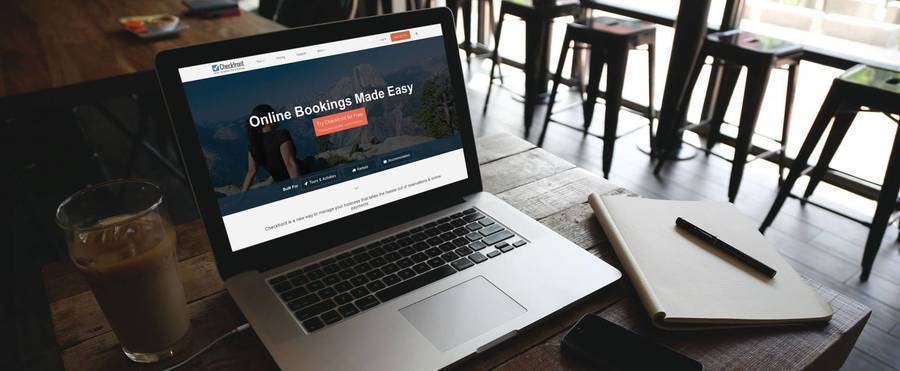A 2006 study found that it only takes 50 milliseconds for a customer to form an opinion about your website. For contrast, a human eye blink takes between 100 and 400 milliseconds—more than twice as long! You have 0.05 seconds to convince a visitor that you are worth their time, but many business owners drop the ball and miss this window entirely. In fact, a lot of website traffic issues can be traced back to that crucial first impression.
So how do you make a good first impression? How are you using your 50 milliseconds? To start implementing website conversion best practices, ask yourself:
What are you about?
What’s the first thing people see when they go to your website? Do you tell people what you’re selling? It seems obvious, but there are an unbelievable number of websites—many of them beautifully designed—which don’t explicitly mention what they sell right off the bat. This is an understandable oversight; as the business owner, you know your products better than anyone. But even if you have decent navigation to your product pages and a streamlined design, it’s all for nought if customers can’t tell what you’re selling them—and remember, they need to understand that crucial piece of information in just a fraction of a second. Make the nature of your products as obvious as possible with high-quality, relevant images and succinct slogans on your home page. And don’t forget about your travel website About Us page.
Do you get to the point?
Animated splash pages were very popular once upon a time, but nowadays they’re just gratuitous and unnecessary. Your customer doesn’t care how nicely it’s animated or how whimsically everything falls into place; they are on your site for a reason, so don’t give them one to leave. Furthermore, splash pages are really unfriendly to search engines, since they obscure the real content of your site. Don’t waste your time or money on this feature; get right to the point with your website.
What do you look like?
Technically, everyone and anyone can make a website. It’s not difficult to learn HTML and go wild. But should anyone make a website? The answer is probably no. Professional web designers exist for a reason; they know how to create a stunning booking page template that make the most efficient use of those precious 50 milliseconds. It’s true that an amateurish website with the correct elements can get plenty of traffic and sales, but they are losing out on hundreds of others who were turned off by their design. If you don’t have web design experience, then use a premade template or hire a designer to make your website for you; it’s worth the investment. Customers don’t want to see cluttered, badly-colored home pages; they want something sleek, professional, and visually appealing.
Relatedly, make sure that your site looks up to date and current. If you have a blog, update it regularly; if your last post was back in 2011, people may think you’re no longer in business. Dust out the cobwebs regularly and remember that a website is never finished; it should be constantly renewed and tweaked to be its very best.
How long is your loading time?
A Kissmetrics survey found that 47% of customers expect a page to load in 2 seconds or less. For every second delay, you face losing millions in annual sales, as people will simply hit the back button and go elsewhere if your site isn’t loading quickly. Just over half of the surveyed participants said that site performance was an important factor in their loyalty to that business.
Sites can run slowly for a variety of reasons, and there are tools like Pingdom and WebPageTest which can analyze your site and find those bottlenecks. Sometimes it’s an issue with your code, which should be as clean and clutter-free as possible; other times it may be because you’re trying to load gigantic images or more complex media like audio or video.
If you’re using a shared web hosting package, your neighbours could be gobbling up all the bandwidth. For code you’ve written, remove unnecessary whitespace and avoid inline styling; all code should be efficient. While images are important, they don’t need to be on the bleeding edge in terms of quality or definition. Consider using JPEGs instead of the larger-size PNGs; the former are compressed, but can still provide quality—especially if they’re going to be a relatively small size anyway. If you absolutely must have audio or video loading on launch, refrain from using the Autoplay function and keep the files on the smaller side.

Take your business to the next level
Online bookings. Flexible pricing. Outstanding support.



